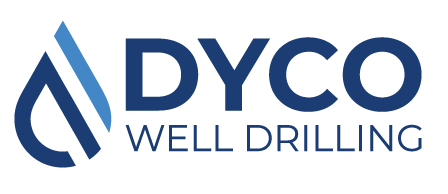Deep beneath our feet lies a hidden world of underground structures, soil layers, and hidden aquifers, waiting to be uncovered by the curious and the skilled. For centuries, humans have been driven to explore and understand the secrets of the earth, and today, advanced geotechnical drilling and sampling techniques are revolutionizing the way we do just that. From uncovering hidden natural resources to ensuring the stability of towering skyscrapers, the art of drilling and sampling has become a crucial component of modern infrastructure development, environmental monitoring, and resource extraction. Yet, despite its importance, the field remains shrouded in mystery, with many of its techniques and innovations unknown to the general public.
The Importance of Geotechnical Drilling and Sampling
Geotechnical drilling and sampling are essential components of any infrastructure project, from towering skyscrapers to complex tunnel systems. These techniques allow engineers and geologists to uncover the hidden secrets of the earth, revealing the intricate web of soil, rock, and groundwater that lies beneath the surface. By collecting and analyzing high-quality samples, professionals can gain a deeper understanding of the site’s geotechnical properties, including its strength, stability, and potential hazards. This critical information enables them to design and construct safer, more efficient, and more sustainable structures that can withstand the forces of nature and support the weight of human activity. Without advanced geotechnical drilling and sampling techniques, the risks of foundation failure, soil instability, and environmental contamination would be significantly higher, putting people, property, and the environment at risk. By digging deeper, literally and figuratively, we can unlock the full potential of these techniques and create a more resilient and sustainable built environment.
Advanced Drilling Techniques: Rotary Drilling, Sonic Drilling, and More
As the demand for accurate and reliable subsurface data continues to grow, the geotechnical industry has responded with a range of advanced drilling techniques that are revolutionizing the way we explore and understand the earth’s subsurface. Among the most innovative and effective of these techniques are rotary drilling, sonic drilling, and others that are pushing the boundaries of what is possible in geotechnical investigation. Rotary drilling, for example, uses a rotating drill bit to penetrate the earth’s crust, allowing for faster and more precise drilling in even the most challenging geological formations. Sonic drilling, on the other hand, employs high-frequency sonic energy to break up and extract soil and rock samples, resulting in higher-quality samples and reduced drilling times. Other advanced techniques, such as directional drilling and down-the-hole hammer drilling, are also being used to access previously inaccessible areas and gather critical data in a more efficient and cost-effective manner. By harnessing the power of these advanced drilling techniques, geotechnical professionals are able to gather more accurate and reliable data, leading to better decision-making and more effective project outcomes.
Sampling Methods: From Soil to Rock, Uncovering the Secrets of the Earth
As we delve deeper into the earth, the complexity of the subsurface increases, and the need for precise and accurate sampling methods becomes paramount. Whether it’s soil, rock, or anything in between, the right sampling technique is crucial for uncovering the secrets of the earth. From the gentle, non-intrusive methods of soil sampling, such as hand augering and Shelby tube sampling, to the more aggressive, high-energy techniques of rock coring, each method has its own unique strengths and weaknesses. Rotary drilling, for instance, allows for the collection of continuous, undisturbed core samples, while sonic drilling provides a fast and efficient way to collect high-quality samples in a variety of formations. By combining these techniques with advanced technologies, such as downhole logging and in-situ testing, geotechnical engineers and scientists can gain a deeper understanding of the earth’s subsurface, unlocking valuable insights into the behavior of the earth’s crust, the movement of groundwater, and the stability of soil and rock formations.
Applications of Advanced Geotechnical Drilling and Sampling: Infrastructure, Environmental, and Resource Development
The applications of advanced geotechnical drilling and sampling techniques are far-reaching and multifaceted, touching on various aspects of modern society. From the foundations of infrastructure development to the preservation of environmental integrity, and the responsible extraction of natural resources, these cutting-edge methods play a crucial role in shaping the world around us. In the realm of infrastructure development, advanced geotechnical drilling and sampling enable the construction of safe, stable, and sustainable structures such as tunnels, bridges, and high-rise buildings. By providing a detailed understanding of the subsurface environment, these techniques help engineers design and build infrastructure that can withstand the test of time and the forces of nature. In the environmental sphere, advanced geotechnical drilling and sampling are essential for monitoring and mitigating the impact of human activities on the natural world. By analyzing soil and rock samples, scientists can identify potential hazards, track the movement of pollutants, and develop strategies for remediation and rehabilitation. Finally, in the realm of resource development, advanced geotechnical drilling and sampling techniques are critical for the exploration and extraction of natural resources such as oil, gas, and minerals. By providing a precise understanding of the subsurface geology, these methods help companies identify new reserves, optimize extraction processes, and minimize the environmental footprint of their operations.
The Future of Geotechnical Exploration: Emerging Trends and Innovations
As the demand for more efficient and accurate geotechnical exploration continues to grow, the industry is on the cusp of a revolution. Emerging trends and innovations are transforming the way we approach drilling and sampling, unlocking new possibilities for uncovering the secrets of the earth. One of the most promising developments is the integration of advanced technologies such as artificial intelligence, machine learning, and the Internet of Things (IoT) into geotechnical exploration. These cutting-edge tools are enabling real-time data analysis, enhanced data visualization, and more precise predictions of soil behavior. Meanwhile, the rise of autonomous drilling systems and robotic sampling technologies is poised to increase efficiency, reduce costs, and minimize environmental impact. Furthermore, the development of new, more sustainable drilling fluids and advanced coring techniques is opening up new avenues for exploration in challenging environments. As these innovations continue to evolve and mature, the future of geotechnical exploration looks brighter than ever, promising to unlock new insights, improve project outcomes, and drive sustainable growth in the years to come.
Conclusion
As we conclude our journey into the world of advanced geotechnical drilling and sampling techniques, it’s clear that the possibilities are endless. By embracing these cutting-edge methods, we can unlock the secrets of the earth, uncover hidden patterns, and make informed decisions that shape the future of our planet. From the depths of the ocean to the highest mountains, the power of advanced geotechnical drilling and sampling techniques has the potential to revolutionize the way we approach environmental monitoring, resource exploration, and infrastructure development. As we continue to push the boundaries of what’s possible, we can expect to see new breakthroughs, innovations, and discoveries that will transform our understanding of the earth and our place within it. The future is bright, and with advanced geotechnical drilling and sampling techniques leading the way, we can be confident that we’re building a stronger, more sustainable tomorrow.

